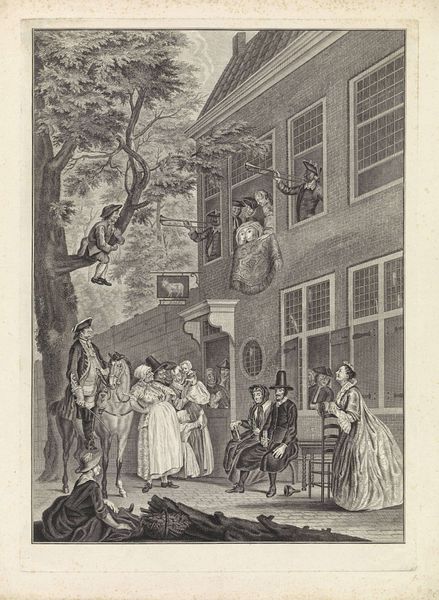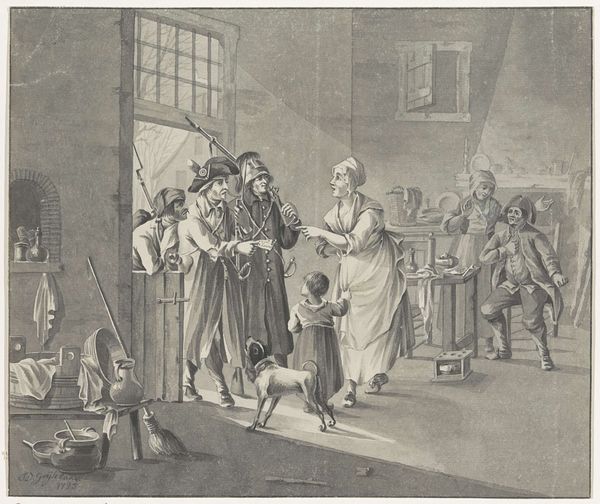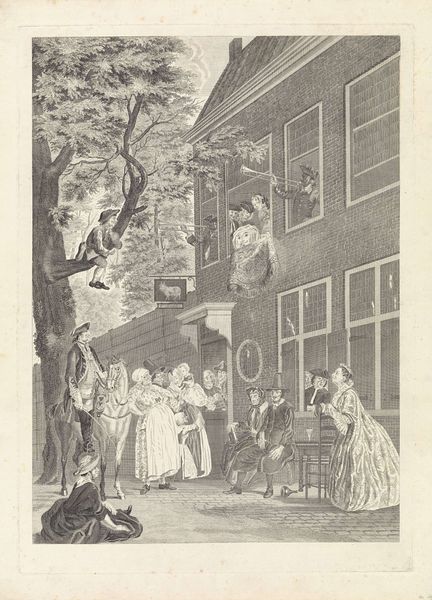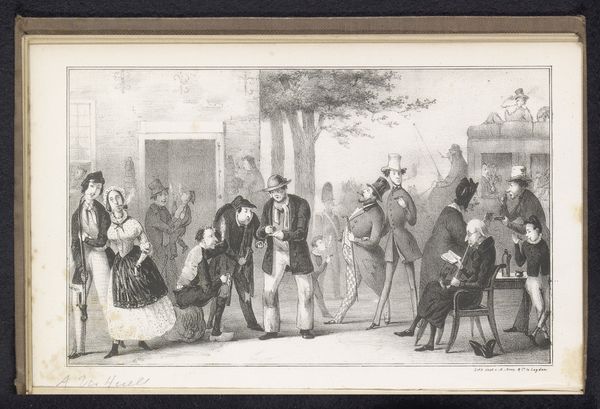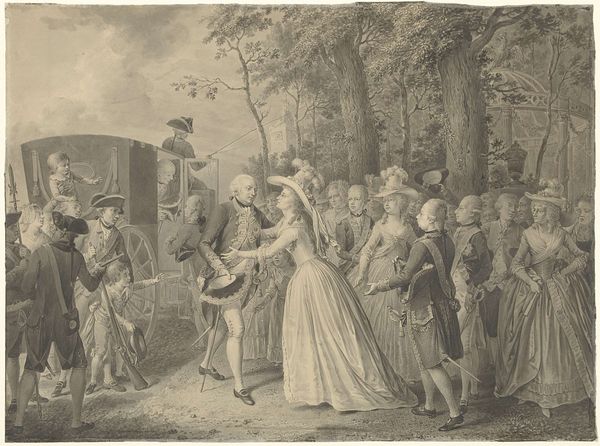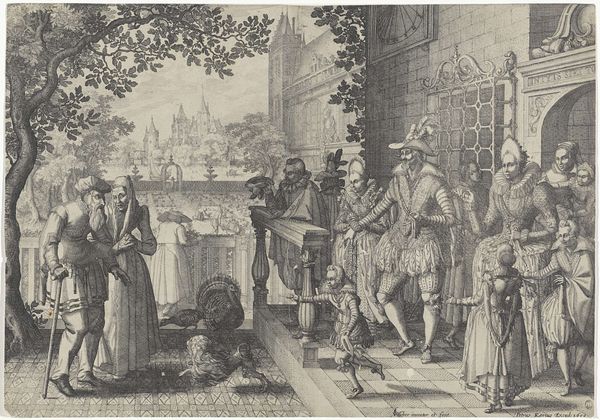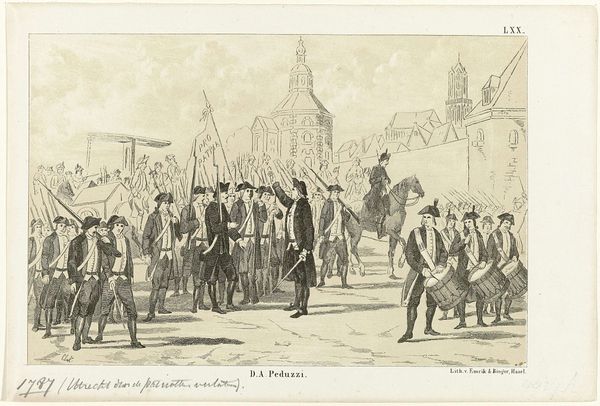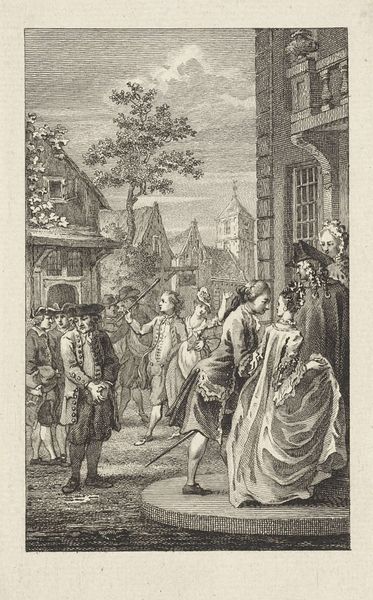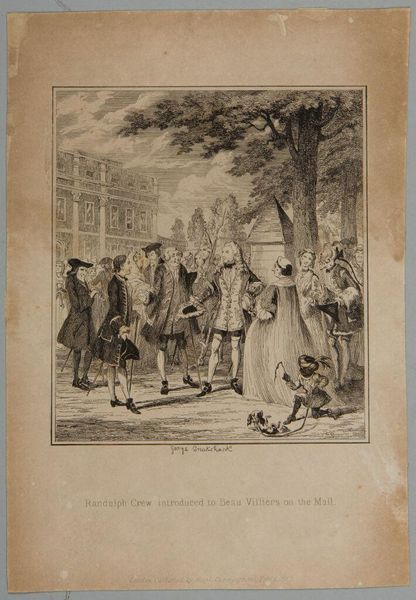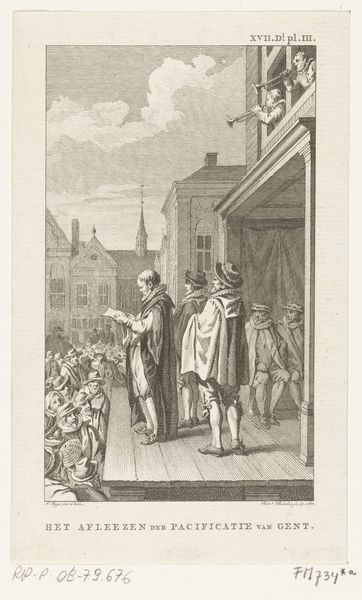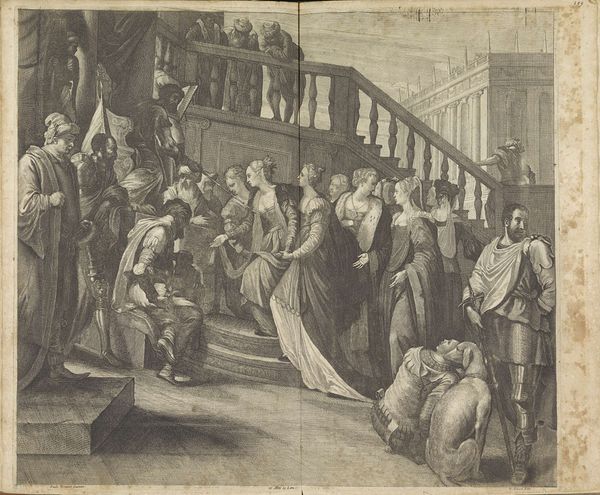
print, engraving
#
portrait
# print
#
cityscape
#
genre-painting
#
history-painting
#
academic-art
#
engraving
Dimensions: height 158 mm, width 234 mm
Copyright: Rijks Museum: Open Domain
Curator: Immediately, I’m struck by the rigidity. So many figures, yet all appear carefully placed, almost like chess pieces. There is little spontaneity in the posture or the line. Editor: Well, that’s understandable. Let’s give listeners some context. This is an engraving, dating from between 1853 and 1861, that commemorates the arrival of Willem IV in Amsterdam in 1747. Its title is "Willem IV ingehaald te Amsterdam, 1747.” Curator: It’s such an obviously staged tableau, isn't it? All the rigid guards, and that building, an architectural expression of power – everything screams performance rather than authentic welcome. It’s not exactly subtle. Editor: It's fascinating to think about how this image was created almost a century after the actual event. How much did collective memory shape its making? Who was it supposed to persuade or convince and to what end? Was this artwork a means to legitimize the reign during this particular period of unrest in the Netherlands? Curator: Precisely! And the composition directs all the gaze toward the arriving Willem IV and his family – a common technique to underscore authority and the intended social order. Note how the figures frame Willem in a rather explicit manner, turning him almost into the artwork’s primary subject, rendering everybody else props in the performance. Editor: Looking at the original historical event itself through newspaper articles and other prints of the era is always a very useful way to consider just how art might function publicly. Here, in its medium, an engraving, there is the aim to present history. So, what is visible is more than a single slice in time. Instead, this work should be regarded as constructed social memory. Curator: Which inevitably introduces a layer of ideological shaping into the visual account, doesn’t it? Ultimately, art like this asks us to constantly examine how narratives are visually constructed and the impact this has. Editor: Indeed. And thinking through these angles provides insight into how public sentiment, in the depicted historical moment and when the print was made, may have shaped the role and meaning of art. Curator: Agreed, and it’s important we examine those connections across time to challenge dominant historical perspectives. Editor: Exactly. A nuanced examination enriches our understanding of art’s complex relationship with society and power.
Comments
No comments
Be the first to comment and join the conversation on the ultimate creative platform.

